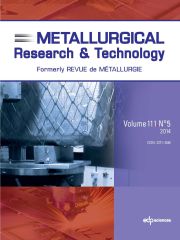No CrossRef data available.
Article contents
Technical impact indicators for materials
Published online by Cambridge University Press: 28 September 2012
Abstract
The impact of the use of particular materials on the environment and society can beassessed in a number of ways, including through the impact on natural resources,contribution to environmental burden and effects on the quality of human life. In thiscontext, indicators such as embodied energy, exergy, TMR (total material requirement),ecological footprint, social indicators (such as effects on human health) and LCA based onthese indicators, are available. We apply the concept of energy networks 1 (quoted in Appendix O), to explore the differences inenergy network impact due to processes for the production of various materials, each timewith an equivalent end-use in mind. The inventory analysis part of LCA has been carriedout on materials, as well as some work on impact assessment (LCIA) for resource use,pollution severity and health impact. The indicators proposed here aid the assessment ofthe energy system impact, particularly with regards to opportunity costs to society,impact on equity in society and the administrative burden on society due to the currentenergy networks. The indicators are: embodied energy, the maximum process temperature, theannual use energy, and network reliance. Three case studies are employed to explore theusefulness of the indicators, including a beverage container, a house window frame and abeverage bottle transport crate. These case studies show that for a particular end use,different materials can have wide differences in the proportion of energy sourced fromenergy networks (a factor of 95 observed in one case). The indicators also offer a quickerindication than life cycle assessment and allow deduction of impacts on a wider socialsystem. The indicators have the potential to change material development and processdesign trends towards processes which are less burdensome on energy networks.
- Type
- Research Article
- Information
- Metallurgical Research & Technology , Volume 109 , Issue 5: Social Value of Materials , 2012 , pp. 305 - 321
- Copyright
- © EDP Sciences 2012


